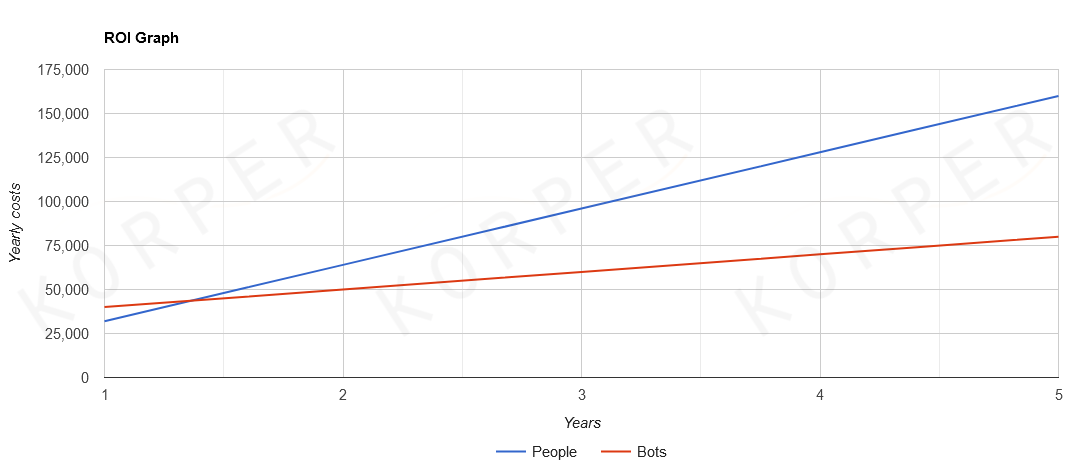Calculate the amortisation period with Korper ICT’s RPA ROI Calculator
In order to get clear insights in RPA’s ROI, Korper ICT has developed the RPA ROI Calculator. After entering only six numbers, the RPA ROI Calculator shows how quickly the costs for implementation and maintenance of RPA can be earned back. The numbers requested are as follows:
- The number of processes that will be automated
- The number of FTE currently working on them
- The percentage of their workdays dedicated to these processes
- The average gross salary of these employees
- One-time development costs per bot
- Estimated maintenance per year
Based on this data, the RPA ROI Calculator will calculate the anticipated budgetary savings for the next five years. This is displayed in a chart and a graph, so it is immediately clear where the tipping point will be. Moreover, you can have the calculations emailed to you in a PDF file, so you can always review the insights or share them with others in your organization.
Why RPA is the future
For years, there have been clear signals coming from the job market: there is a harrowing shortage of specialized staff, especially in IT. For the specialists themselves, it seems like they have the world at their feet. However, there are many organizations where executing repetitive processes makes up a significant part of their job.
- What would happen if another organization could offer them the opportunity to make optimum use of their talents, simply because they have managed to properly implement RPA?
- Think about how their talents can be better utilized if RPA would take over these processes from them. Then you could offer them the space to develop themselves, something that eventually benefits everyone.
RPA is a driving force with many additional advantages
We’ve seen it in virtually every organization where we have implemented RPA: as soon as the initial processes have been automated, other departments also come to see if this technology could be a solution for them. Because the initial investments have already been made, these other processes are very easy to add. The consequence is that it becomes a game: what else can we give out of our hands to make better use of our own time? Employees get to eliminate their most boring tasks, freeing up more time to invest in new projects that energize them as well as the organization.
RPA is important in every organization
RPA can be very beneficial, regardless of the industry or size of an organization. Recurring processes are everywhere, and thanks to RPA these can be delegated to a robot that never needs any sleep. Employees get to invest their energy in more enjoyable projects, which can breathe new life into the organization. Furthermore, the payback time is often shorter than initially anticipated, creating multiple benefits.
Calculate here what your organizations’ return on investment for RPA can be and start saving costs as soon as possible!



